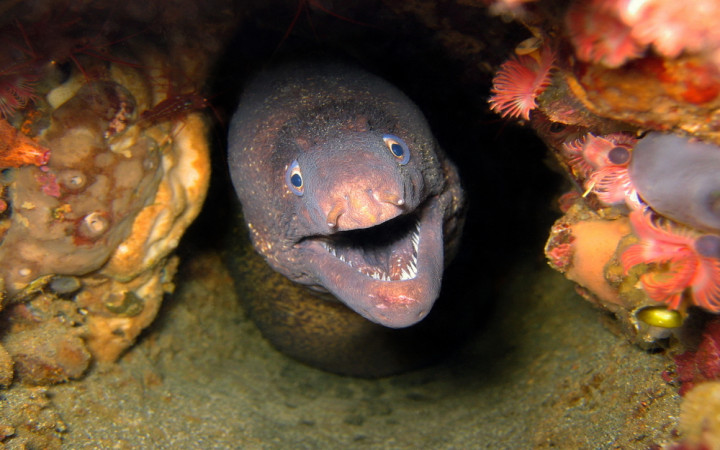Should you be worried about getting shocked by an electric eel the next time you wade in a creek or go for a swim in a lake or river? Unless you live in South America, the answer is… no! But electric eels are real.
Known by the scientific name Electrophorus electricus, the electric eel is an electric fish able to generate powerful electric shocks. Electric eels use their shocking abilities for hunting and self-defense.
In fact, electric eels are not actually eels at all. They're a specific kind of knifefish that lives mainly in bodies of fresh water in South America, such as the Amazon River.
Electric eels are more closely related to catfish than true eels. True eels cannot produce electric shocks like electric eels can.
Electric eels have long bodies (up to six feet long) shaped like a cylinder. Since they look a lot like true eels, they've been called electric eels since they were discovered. Electric eels can weigh up to 45 pounds.
Unlike many fish, electric eels breathe air. They regularly rise to the surface every 10 minutes or so to take a breath before heading back underwater.
Electric eels have three sets of internal organs that produce electricity. The organs are made up of special cells called "electrocytes." Electric eels can create both low and high voltage charges with their electrocytes.
Electric eels generate their electric shocks much like a battery. Like the stacked plates of a battery, the stacked electric cells can generate an electrical shock of 500 volts and 1 ampere. Such a shock would be deadly for an adult human!
Electric eels can vary the intensity of their shocks, using lower voltages for hunting and higher voltages for self-defense.
Most of the time, electric eels produce lower voltage shocks just strong enough to stun prey or deter a threatening animal. When threatened, electric eels can produce intermittent electric shocks for at least an hour without showing any signs of getting tired.
Electric eels are usually only safe to be around when they're in a zoo or an aquarium. Some people have been able to keep them as pets, but they're very difficult — and dangerous — to try to catch in the wild.
Electric eels need at least a 200-gallon tank and usually must be kept by themselves since they will attack other fish.




